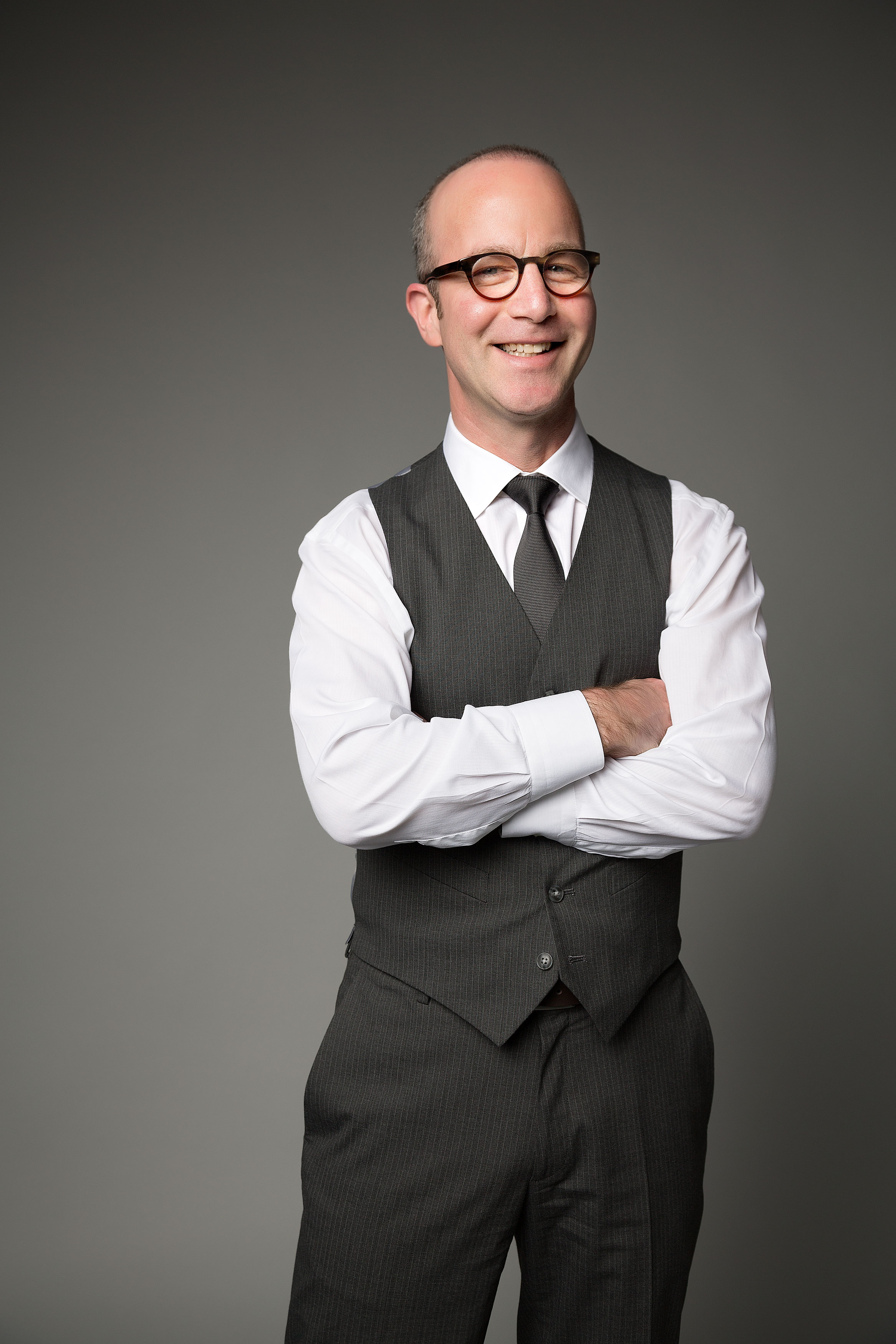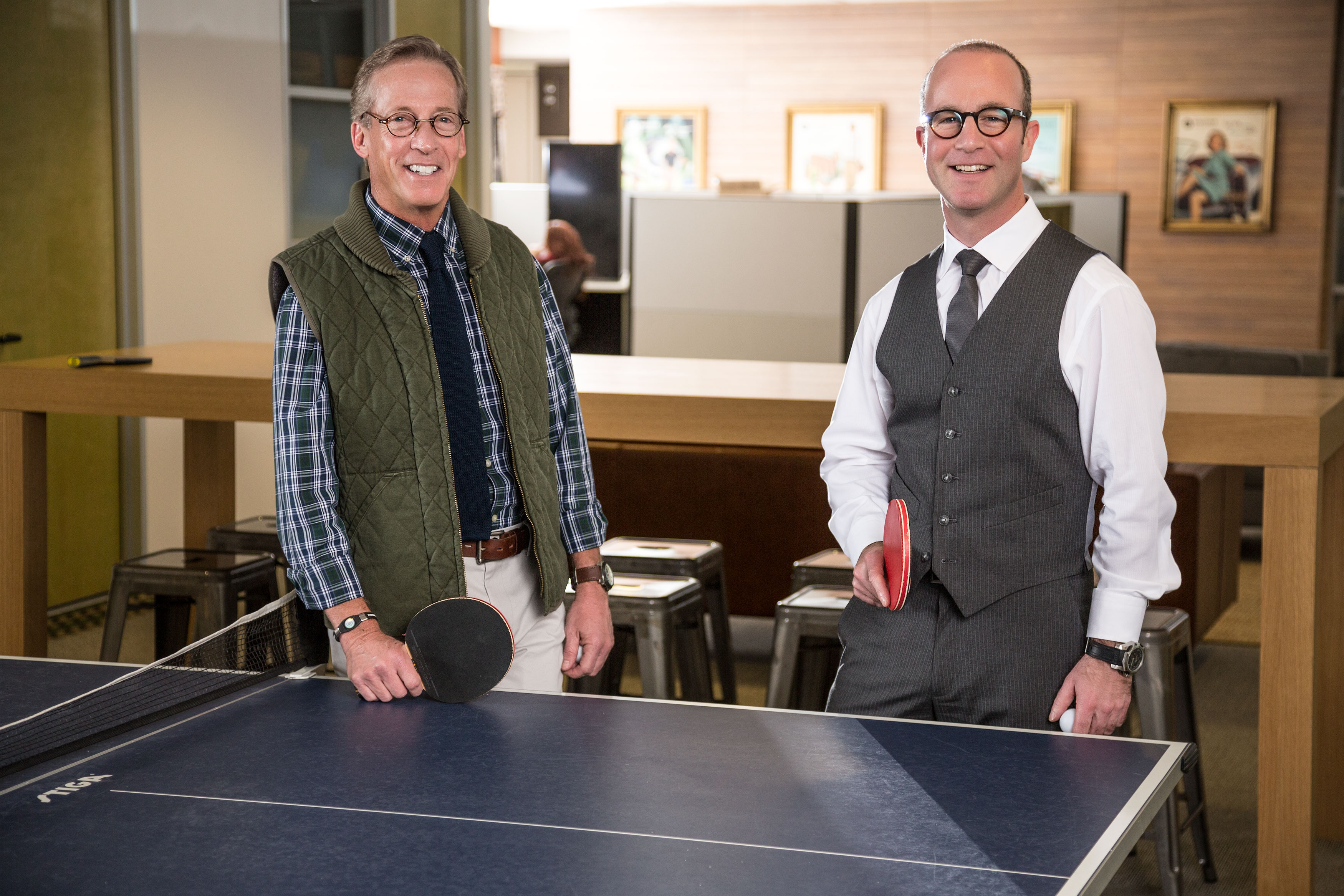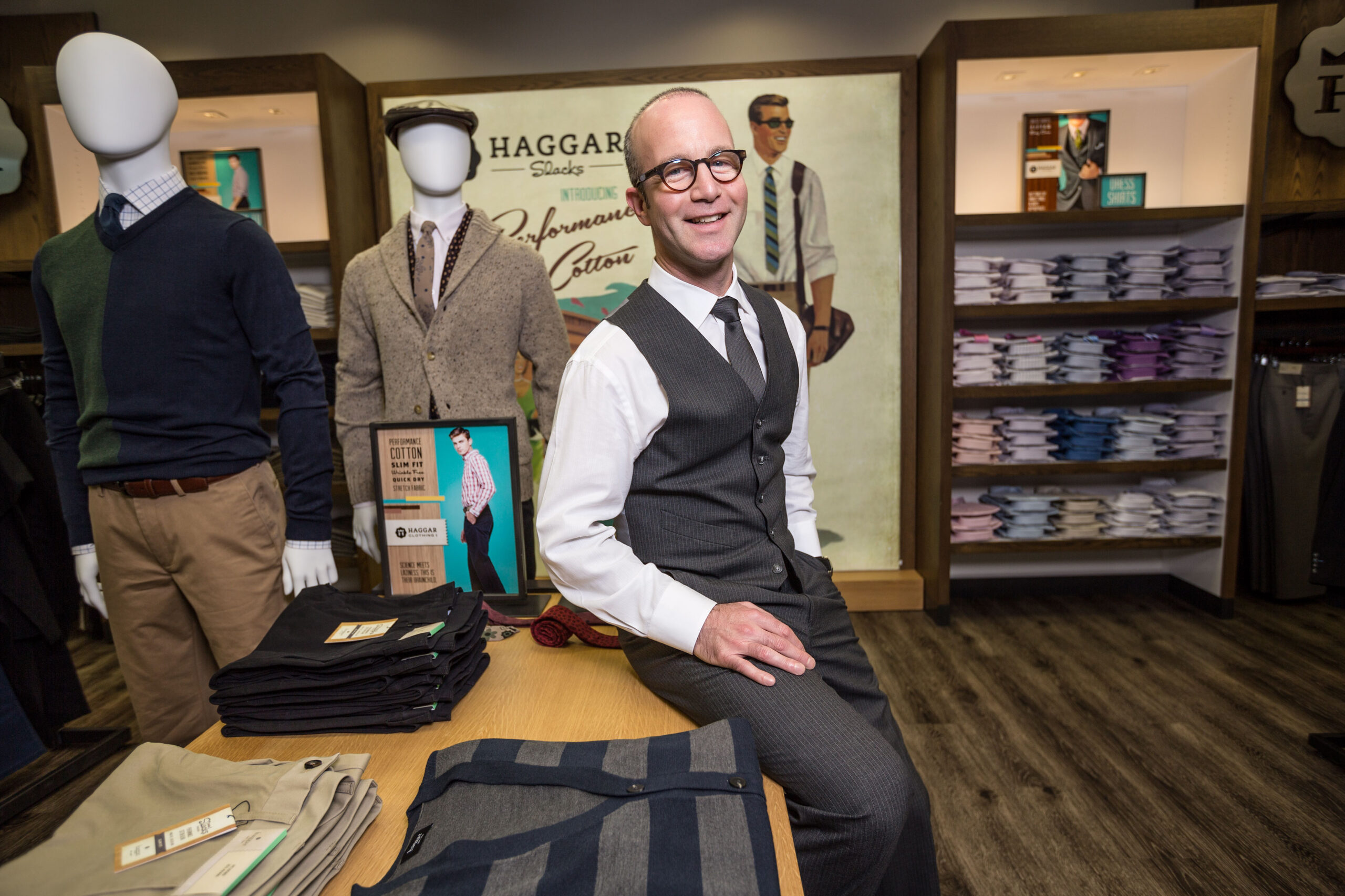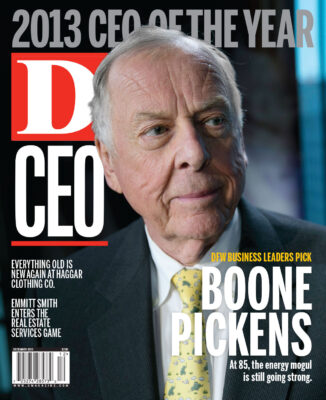DEVELOPING A WORK ETHIC
The son of an attorney-father and schoolteacher-mother, Stitt grew up in Toronto, where he recalls always being tuned to a fast pace. “I had so much energy when I was 5 or 6, my mom made me run around the house 10 or 20 times before I went to bed,” he remembers. From about age 8 on, he played competitive tennis. He credits the long hours of practice as planting the seeds of the work ethic he has had his whole life. “When my friends were goofing around, I was training,” he says. “I think that instilled discipline in me at a young age.”
Stitt played tennis at the University of Western Ontario, where he graduated in 1988 with a bachelors degree in economics. He went on to the Schulich School of Business at York University, earning his MBA there in 1991. “In school I had an affinity for courses on underdeveloped countries,” he recalls. “I was fascinated with the economics of the least-developed countries. So after I finished my MBA, I decided to throw on a backpack and go to Asia for six months on a budget of $6 a day.”

With clothing companies moving production to Hong Kong and elsewhere in Asia, Stitt says he figured there would be plenty of travel in the job. More fundamental to his future career, he was able to work under a legendary figure in the Canadian rag trade. Mister Leonard was run by Sam Gertner, known as a hardnosed dealmaker who didn’t easily suffer fools. “He was an old-time garmento genius who drove incredible profitability,” Stitt recalls. “He allowed me to learn all the facets of the business. I’d go to Paris to the biggest fabric show in the world. . . . I’d go to Italy to Prato to buy fabric, to China to the factories. He let me run the sales force. I oversaw merchandising for a number of years. I was so fortunate because you can start your career working in a big company and you’re kind of in a silo. I was fortunate to start out in a place where I could learn every aspect of the business and in a very profitable company. [Gertner] taught me how to make money in the apparel business.”
At its height, Mister Leonard was doing about $50 million a year in sales. Then, though, Gertner fell into poor health and, in 1999, decided to close the company and retire. One of Mister Leonard’s lines of business was developing and selling women’s wear under a licensing arrangement with Haggar.
Joe Haggar III and then-CEO Frank Bracken asked Stitt if he’d like to open a women’s-wear subsidiary in Canada for Haggar. Stitt agreed and started a three-person operation housed in an 800-square-foot office. “I was allowed to be entrepreneurial while I still had this larger company behind me,” Stitt says. “It was a really nice mix for me.”
Nanditha Zuckerman, now Haggar’s senior vice president of global operations, was one of those in the Canadian operation. Stitt “understands what motivates people, and he has very clear expectations,” she says. “He does a wonderful job of pushing us beyond our comfort zone, but he’s clear in his expectations; he’s not setting you up to fail. He moves fast. His team is always on high alert. If everything’s going well, he’s going to throw another challenge at you.”
In Canada, Stitt oversaw a rapid and successful move of production offshore, and was constantly growing the business by offering different products and categories, Zuckerman says. In about four years, he grew a $3 million business to $20 million. Then, in 2005, Haggar took back the license it had given another company to make and sell men’s clothes in Canada, and Stitt’s operation was put in charge of developing the company’s men’s clothing business in Canada as well. “Men’s and women’s fashions are completely different businesses,” Zuckerman says. “We had to learn a whole new business and do it so nothing fell away. We continued to grow that business, too.” From 2006, when he was named president of the Canadian operation, to his promotion to the headquarters in Dallas, Stitt grew the business by five times and maintained double-digit margins throughout the period.
Zuckerman says Stitt’s approach to personnel has meant she’s never had to ask for a promotion. He knew when she was ready to move up. And, she says, she hasn’t been held back for taking four maternity leaves. “He made me COO of the Canadian organization when I was eight months pregnant with my second child,” she says.
“He’s a very humble leader,” Zuckerman adds, noting that Stitt’s office next to the executive conference room is one of the smallest on the floor. Located at the back of the company’s six-story building, Stitt’s office does, however, have a nice view of the Trinity River’s Elm Fork branch.
In Canada, Zuckerman says, “We built this company where employees came to work and it was their passion. It was not just a job they came to [in order] to pay their bills. Everyone’s driving force was, ‘Let’s do what right for the company.’” That, she says, is the culture Stitt wants to recreate in Dallas.

TARGETING MILLENIALS
Stitt and his revamped management team face the challenge of appealing both to loyal, older customers who have bought Haggar for years, and “the millennial guy” in his 20s or early 30s.
Haggar’s primary customers are department stores such as Macy’s, Kohl’s, J.C. Penney, and Sears. It also has 60 outlet stores, a part of the business Stitt wants to grow by 10 or 15 stores a year. There are also online sales, another part of the business where Stitt sees growth potential.
Walking about a room resembling a retail sales floor referred to as “Haggar University,” Stitt points out a new line of pants with a younger customer in mind they’re calling, sure enough, “Slacks.” “We’re going to ship these early next year for the spring,” he says. “They’re age-appropriate for millennials—more slim and straight fits, more modern fabrics. There are things you can do to cultivate [younger customers]. We’re using social media and various other mediums.”
Rich Honiball, senior vice president of marketing and licensing and e-commerce, and another Stitt hire, says vintage clothing is a major influence on current, younger fashion, and Haggar is well-positioned to tap into that, given its history in the business. “There’s a guy who buys from us for Macy’s. He listens to throwback music and he’s listening to it on vinyl,” Honiball relates, summing up some of the attributes of millennial tastes. “He believes the music sounds better with the hiss and crackle.”
Honiball, who previously worked for Brooks Brothers and J.C. Penney, likens the fashion Haggar is introducing to the music of Mayer Hawthorne, whose neo-soul sound is straight out of the 1960s and ’70s. “Now, a pants is a pant is a pant,” he says. “But if it’s great fitting, has performance attributes that an older and younger customer will like, it’s the right fabric and vintage-inspired pattern, you’ll get an older customer who says it reminds him of something he wore 30 years ago, and the younger customer will say it reminds him of something he saw in a vintage shop, except in a much better fabric.”
The trend toward vintage has been manifest in such things as the popularity of the pork-pie hat and hats in general—which faded in the 1960s—and the success of brands like Old Spice. “Millenials like these nostalgic, authentic, real brands,” Honiball says. “They like the things their grandfather liked.”
Stitt says he wants to turn Haggar into a “lifestyle brand” with the introduction of new lines in coming seasons. This year it was shirts, made to be paired with Haggar’s dominant Life Khaki casual pants. For next year, the company is producing a line of dress shirts and sweaters and testing the market in Canada with a line of footwear. Shoes are a natural for the company, considering that its part-owners in Asia produce 400 million pairs of shoes a year for major brands like Nike and New Balance—20 percent of the world’s athletic and outdoor shoes.
While Stitt is involved in the style aspects of the business, so-called sourcing occupies a lot of his attention, too. The production of the clothing drives margins, and quality is something that Stitt says will make or break the brand. “We must provide better quality at the same price as our competitors, because customers are smart,” he says. “They know if something wears and washes well or if its shrinks and pills.”
Recently, the company has explored repatriating production to the United States. But Stitt says flatly that Haggar would lose money making clothing here. With so much of its production in Asia, the company has a director of Asian operations who lives there , as well as 15 associates who oversee quality control at its contracted production factories.
The death of more than 500 workers in a building collapse in Bangladesh in May—the deadliest garment-factory accident in history—prompted Haggar to re-audit its suppliers using third-party inspectors, Stitt says.
He says there is often so little local oversight in countries such as Bangladesh that Haggar pays to send its own engineers to assess the structural stability of its suppliers’ factories. “I don’t think it’s the right approach to say I won’t produce in Bangladesh anymore,” he says. “I’ve been there seven or eight times, and it’s a really depressing country. It’s mind-boggling to me to see the degree of poverty. If you abandon [the workers, they turn to] terrible, terrible alternatives, like begging or prostitution. It’s not like they go find an office job.
“We do everything we can do to make sure workers are protected at these factories, that they are paid properly, that overtime is appropriate, that they’re 100 percent compliant with our standards and customers’ standards,” he says. “Hopefully we can improve their lives.”
•••
EXERCISE A PRIORITY
Travel to Asia and to Europe, where Stitt says the company has plans to expand, as well as to domestic destinations, puts him on the road as much as 40 percent of his workdays. He devotes his off-hours to his family—his wife Carla, whom he married in 2000, and two sons ages 11 and 8—and is highly disciplined in keeping fit. “I try to make exercise a priority,” he says. “It can be 60 minutes, 75 minutes early in the morning or right after work before dinner with the family.”
Stitt, who is indeed trim and healthy looking, says he was influenced by the book, Younger Next Year, published in 2004, which suggests exercising a minimum of six days a week can slow or reverse the aging process. He says he has constructed a small gym in the Preston Hollow house he is leasing while the family decides where they want to settle. He also still plays a bit of tennis.
The CEO says he finds Dallas appealing for the warmth and honesty of its people—“more warm and embracing than many in the Northeast,” he says—and he’d like to make his stay here and at Haggar a long one. “Hopefully we’ll continue along this path,” he says. “If I ended up in Dallas for the next 10, 15 years or longer, I’d be very happy.”






